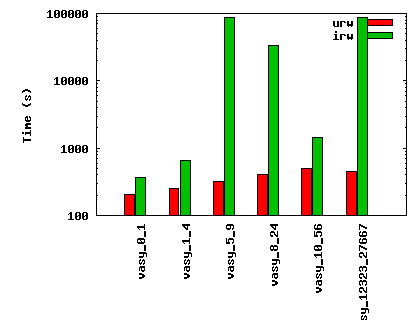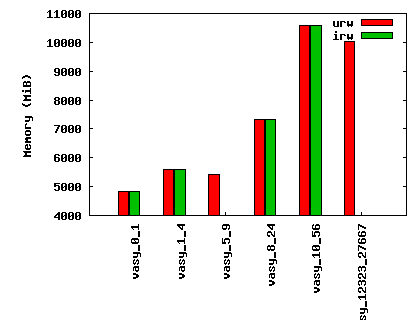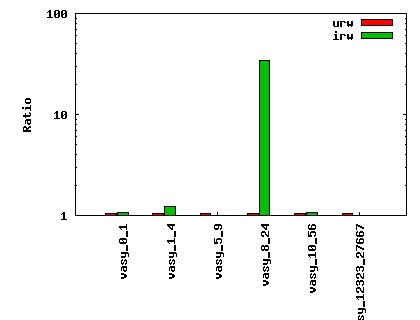Here is the measures of time, memory and ratio for both isotropic
random walk (irw) and uniform random walk (urw) to cover 10^9 paths
in 6 different models (all those models are from
the VASY VLTS benchmark).
We can see that Rukia (urw) outperforms isotropic random walks (irw)
in every situation. urw always finish before irw and, even more
important, irw does not finish after 24h in some cases.
Expected time to cover 10^9 paths
Path lengths varies from one model to another in order to still have
10^10 paths.
Timeout after 24h. So isotropic random walk couldn't draw 10^9 paths
in models vasy_5_9 and vasy_12323_27667

Memory consumption to cover 10^9 paths
This measure is only available for methods that finish before
24h. The lower the better.

Ratio: number of generated paths / number of different paths
This measure is only available for methods that finish before 24h.
This ratio is equal to 1 if and only if the method never generates
the same path twice. So, the more ratio is close to 1, the more
efficient the method is.



